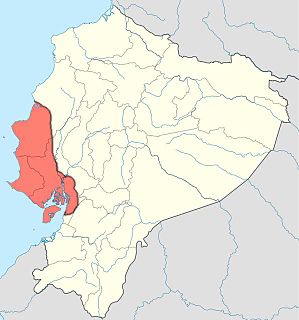
Spondylus is a genus of bivalve molluscs, the only genus in the family Spondylidae. They are known in English as spiny oysters.

Cerioporus squamosus aka Polyporus squamosus is a basidiomycete bracket fungus, with common names including dryad's saddle and pheasant's back mushroom. It has a widespread distribution, being found in North America, Australia, Asia, and Europe, where it causes a white rot in the heartwood of living and dead hardwood trees. The name "dryad's saddle" refers to creatures in Greek mythology called dryads who could conceivably fit and ride on this mushroom, whereas the pheasant's back analogy derives from the pattern of colors on the bracket matching that of a pheasant's back.

The Chimú culture was centered on Chimor with the capital city of Chan Chan, a large adobe city in the Moche Valley of present-day Trujillo, Peru. The culture arose about 900 AD, succeeding the Moche culture, and was later conquered by the Inca emperor Topa Inca Yupanqui around 1470, fifty years before the arrival of the Spanish in the region. Chimor was the largest kingdom in the Late Intermediate Period, encompassing 1,000 kilometres of coastline.

Salinas is a coastal city located in the Province of Santa Elena, Ecuador. It is the seat of the canton that bears its name. The westernmost city on mainland Ecuador, Salinas is an important tourist center. Salinas, Ecuador's largest coastal resort, offers one of the country's best real estate investment markets and most popular and most upscale beach lifestyle. It was the site of the ISA World Junior Surfing Games Ecuador in 2009. There are two major yacht clubs in Salinas, the first is Salinas Yacht Club, which is smaller than the Puerto Lucia Yacht Club, in Santa Elena, in an area known as 'La Libertad' which, in Spanish means 'The Freedom Town'. Puerto Lucia boasts a hotel, several restaurants, a private beach and apartment buildings, as well as the large marina and port.
The shells of large saltwater bittersweet clams in the genus Glycymeris have a special archaeological significance in the southwestern USA, because the shells were used in trade item production by the Hohokam tribe of Amerindians. In this context the shells are known to archeologists as "Glycymeris shells".

The leafscale gulper shark is a dogfish of the family Centrophoridae. C. squamosus is reported to have a lifespan of approximately 70 years, based on otolith ring counts. It was the first described species in the genus Centrophorus, which now contains 13 species.
Typhlophis is a monotypic genus created for the blind snake species, T. squamosus, found along the Atlantic coast of South America from the Guianas to Pará in Brazil, as well as in Trinidad. No subspecies are currently recognized.

The Manteño civilization were the last pre-Columbian civilization in modern-day Ecuador, active from 850 to 1600 CE. It encompasses the area of the earlier Valdivia culture.

Turbo laminiferus, common name the crinkly turban, is a species of sea snail, marine gastropod mollusk in the family Turbinidae.

Dolomena variabilis, common name : the Variable Conch, is a species of sea snail, a marine gastropod mollusk in the family Strombidae, the true conchs.

Charonia lampas is a species of predatory sea snail, a marine gastropod mollusk in the family Charoniidae.
Spondulix is 19th-century slang for money or cash, more specifically a reasonable amount of spending money. Spondulicks, spondoolicks, spondulacks, spondulics, and spondoolics are alternative spellings, and spondoolies is a modern variant.

Isognomon alatus, the flat tree oyster, is a species of bivalve mollusc in the family Isognomonidae. It can be found along the Atlantic coast of North America, ranging from southern Florida to Brazil and Bermuda.

Isognomon radiatus, the radial purse oyster or Lister's tree oyster, is a species of bivalve mollusc in the family Pteriidae. It can be found along the Atlantic coast of North America, ranging from southern Florida to Brazil and Bermuda.

Spondylus americanus, the Atlantic thorny oyster, is a species of bivalve mollusc. It can be found along the Atlantic coast of North America, ranging from North Carolina to Brazil.

Spondylus gaederopus is a species of marine bivalve mollusc, a thorny oyster in the family Spondylidae. This species is endemic to the Mediterranean Sea.

Shell jewelry is jewelry that is primarily made from seashells, the shells of marine mollusks. Shell jewelry is a type of shellcraft. One very common form of shell jewelry is necklaces that are composed of large numbers of beads, where each individual bead is the whole shell of a small sea snail. Numerous other varieties of shell jewelry are made, including bracelets and earrings.

Spondylus varius, is a species of large marine bivalve mollusc in the family Spondylidae, the spiny oysters.

Spondylus regius, the regal thorny oyster, is a species of bivalve mollusc in the family Spondylidae. It can be found in the Western Pacific, and can grow 131 mm in length.
















